Homegrown peaches are nothing like the bland, sometimes-crunchy, sometimes-mealy fruits you so often find at the supermarket. Those grocery store peaches have to be picked underripe so they are firm enough to hold up to the shipping process. But not so for peaches grown in your own backyard – keep reading to learn how to time your peach harvest just right for the most succulent, sweetest, juiciest peaches possible.
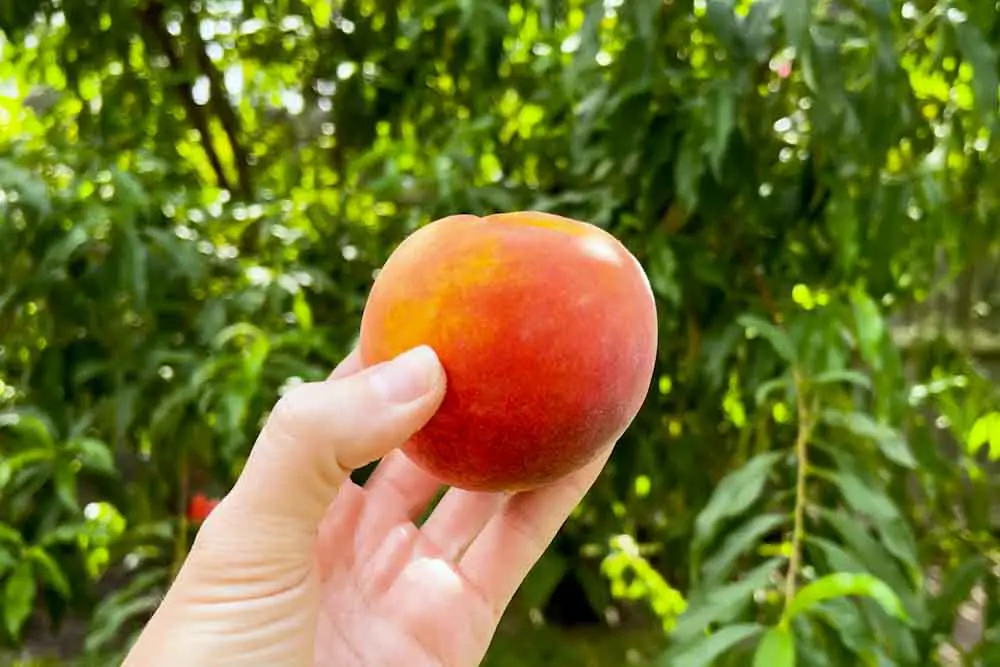
This post may contain affiliate links to products for your convenience. We may receive commissions from purchases made through these links, at no additional cost to you.
Every summer it feels like a triumph when my peaches make it to harvest time. It often seems like the elements are against me – between late frosts, heavy spring rainfall, strong winds, the ever-present threat of disease, and hungry squirrels and birds, I feel lucky to still have peaches on my tree!
It is completely worth the work, however, to get to pick perfectly sweet, mouthwatering peaches from my own backyard. Timing is everything, though. If you pick to early, the peaches haven’t been on the tree long enough to develop their flavor. But if you wait too long to harvest, the peaches get soft and mushy, inviting every fruit fly and pest to the area.
Read on to learn the tricks of timing your peach harvest just right. We’ll take a look at the details of what determines harvest time, what a ripe peach should look and feel like, and how to harvest and store your fresh-picked peaches – as well as some other peach-picking tips.
When are peaches ready for picking?
Peaches are true summer fruits, but they have a fairly wide range of harvest times. Most peach trees will be ready for picking between June and late August, although some could be as early as May or as late as September. However, the climate and weather can affect the harvest time significantly. For example, my ‘Loring’ peach trees are usually ready to pick in early June, but this year (because of an early spring and other factors) they were ripe by mid-May.
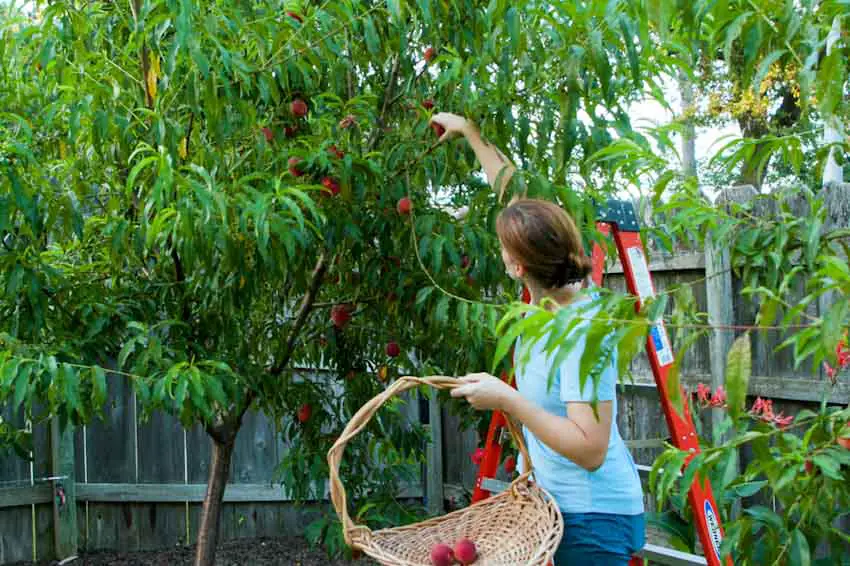
Related: The Best Peaches to Grow for Fresh Eating
Ripening time is also determined by the specific peach cultivar. Some low-chill hour peaches like ‘FloridaPrince’ ripen as early as May, while high-chill cultivars like ‘Contender’ (which needs 1000 chill hours) won’t be ready until August or September.
Learn more: The Best Low-Chill Peach Trees for Warm Climates
The weather is also a consideration when figuring out the perfect picking time. I recommend not picking your peaches right after a heavy rainfall. I’ve noticed that my peaches seem a little soft the day after a downpour. The tree quickly absorbs a lot of water from the ground, which can leave the peaches themselves tasting watery. It’s better to wait a day or two for the ground to dry and the peaches to get a bit more sunlight. They may even firm up again once conditions dry out (this has happened to me).
Watch the video below to see exactly how I determined the right time to harvest my peaches:
Characteristics of a Ready-to-Pick Peach
Check a couple of peaches on your tree by this list to determine if it’s time to pick:
Color
Peaches range in color from almost entirely red, to orange-gold, to yellow-pink, all the way to white. It’s helpful to check what color your cultivar is supposed to be when ripe, but that’s actually not the most important thing. Instead, look for any signs of green on the peaches. A ripe peach will lose its green tinge completely; if you pick a peach when it’s green, it will taste “green” and vegetal.
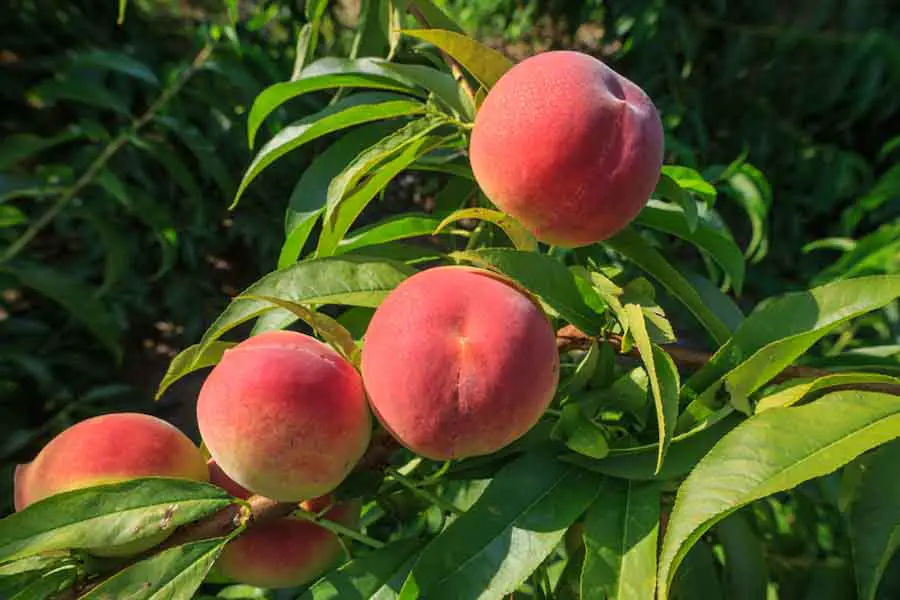
Size
Size is a helpful indicator of ripeness. As the peach develops it will reach its full size shortly before harvest time. The final size of a peach will vary due to a lot of factors – the cultivar, pruning and thinning, tree vigor, etc.
Shape
Most peaches begin their life with an elongated, heart shape with a point on the end. (The exception is Saturn or donut peaches, which have a squashed, flattened shape). As the peach matures it will swell into a rounder shape, often losing most of its pointed end. That round shape is a clue that it’s almost time to pick.
Smell
A ripe peach is very fragrant from not very far away. The scent is a good indication of ripening.
Firmness
A peach that is ready to pick will have just a little give when gently squeezed. Peaches stay very firm when they are not yet ripe. Once you feel a slight bit of softness, it’s time to pick. Avoid letting peaches become too soft on the tree, however – soft quickly turns into mushy and mealy.
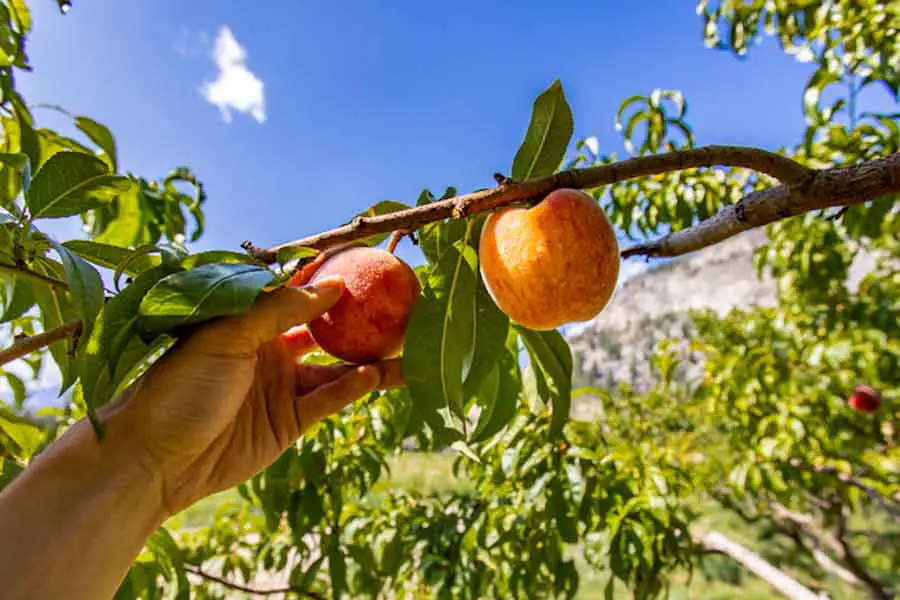
Birds
If you notice a few bird pecks (or big bites) taken out of your peaches, then they are just about ready. Birds, squirrels, and other critters will happily eat somewhat under-ripe fruit, but their interest is a good sign to look for. The only question is, can you save enough peaches for yourself!
Easy Removal
A perfectly ripe peach will be easy to remove from the tree by hand. If you have to do too much tugging or twisting, leave the fruit on the tree for another day or two.
Taste
Finally, give one peach a taste. If you’re happy with the flavor (even if you plan to let it soften for a day or so), then it’s time to pick. The longer peaches stay on the tree, the sweeter they will get.
How to Harvest Homegrown Peaches
The best way to harvest your peach crop is by hand. Gently twist the peach, and it should come off easily in your hand. As you pick, discard any damaged or diseased fruit in another location to keep pests from being attracted to the area. Lay the ripe peaches in a basket or shallow box in a single layer to avoid bruising.
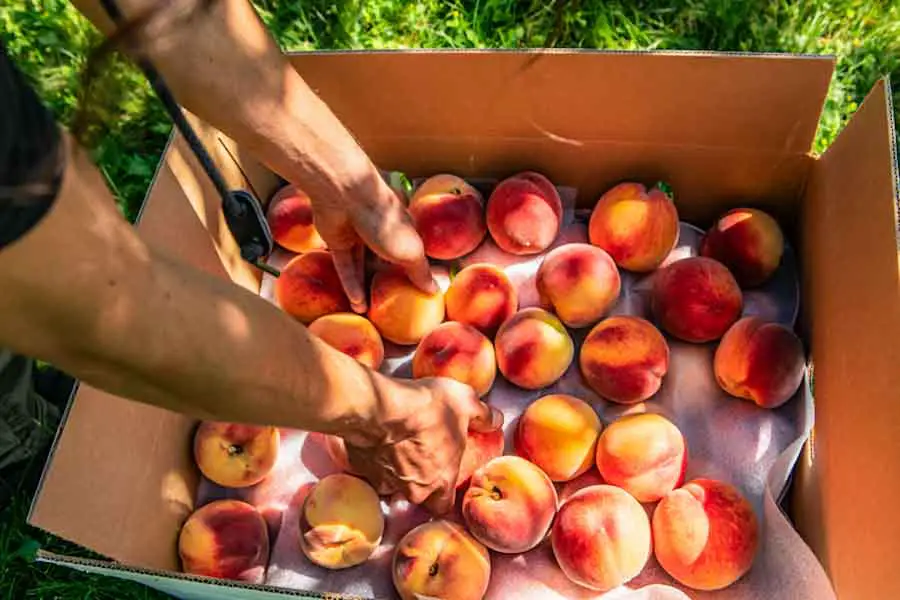
Storing
Leave peaches out at room temperature for a day or so to soften to your desired texture. Once they are a little soft, transfer them to the refrigerator, being careful not to bruise. Store peaches in the refrigerator for up to a week.
Freezing peaches is a great option for longer storage (this is much easier to do with freestone peaches). The texture will soften as they thaw, but frozen peaches can be used for anything from smoothies to pie filling. You can even freeze whole peaches.
I also like to can peaches in a light syrup. This is a simple technique that allows the fresh-picked peach flavor to be enjoyed many months after harvest.
Using
In addition to canning, freezing, and eating tons fresh, take advantage of peach season by making as many delicious peach recipes as possible! One of my favorites is my Roasted Peach Salsa with Green Chiles (pictured below).
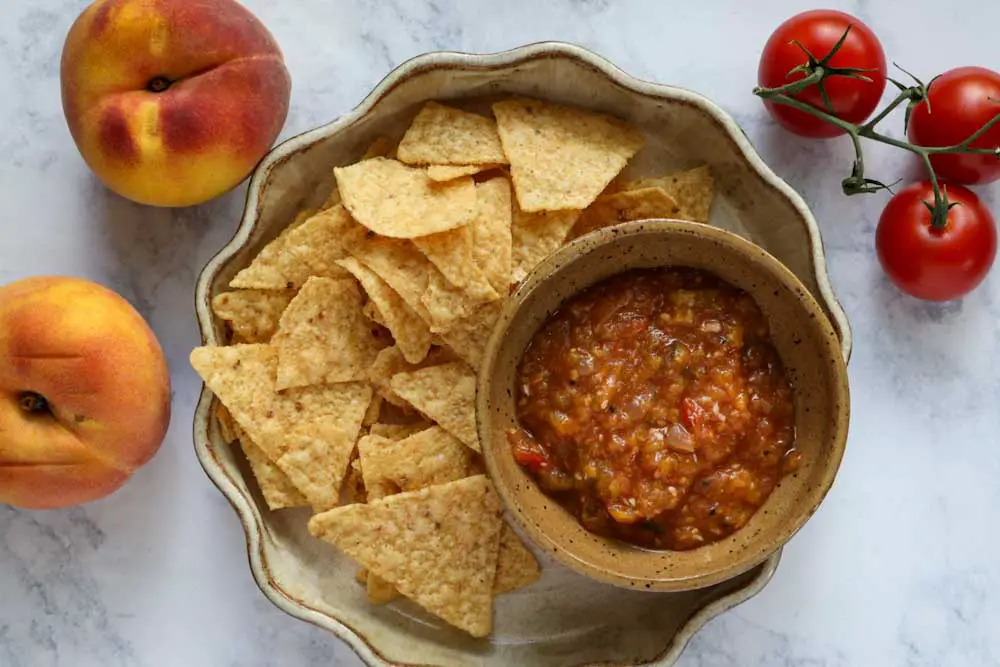
A Few More Peach-Picking Tips:
Keep Track of When You Pick
Use a gardening journal, your phone, or a notebook to log when you harvest your peaches. Take note of the weather, the size of the harvest, and the flavor of the fruit. I find it rewarding to go back and see the literal “fruits” of my gardening labors all written down. But also, it can be helpful to reference the following season when you are approaching harvest time.
Do all the peaches ripen at the same time?
In general, peaches will ripen over a period of a week or two, but much of the fruit may be ready for picking at the same time. I find that once the first peaches start to ripen, it’s a race to save the rest from wildlife. Because of this, I will pick some peaches a little early just to be sure they’ll make it to my kitchen.
Will peaches continue to ripen off of the tree?
Peaches will soften at room temperature once they are removed from the tree, but they won’t become any sweeter. Placing them in the refrigerator will slow the softening process quite a bit, but it also diminishes the peachy flavor. For me, the perfect time to pick is when the peaches are just barely soft on the tree, then I leave them out for a day or two to reach the perfect texture.
